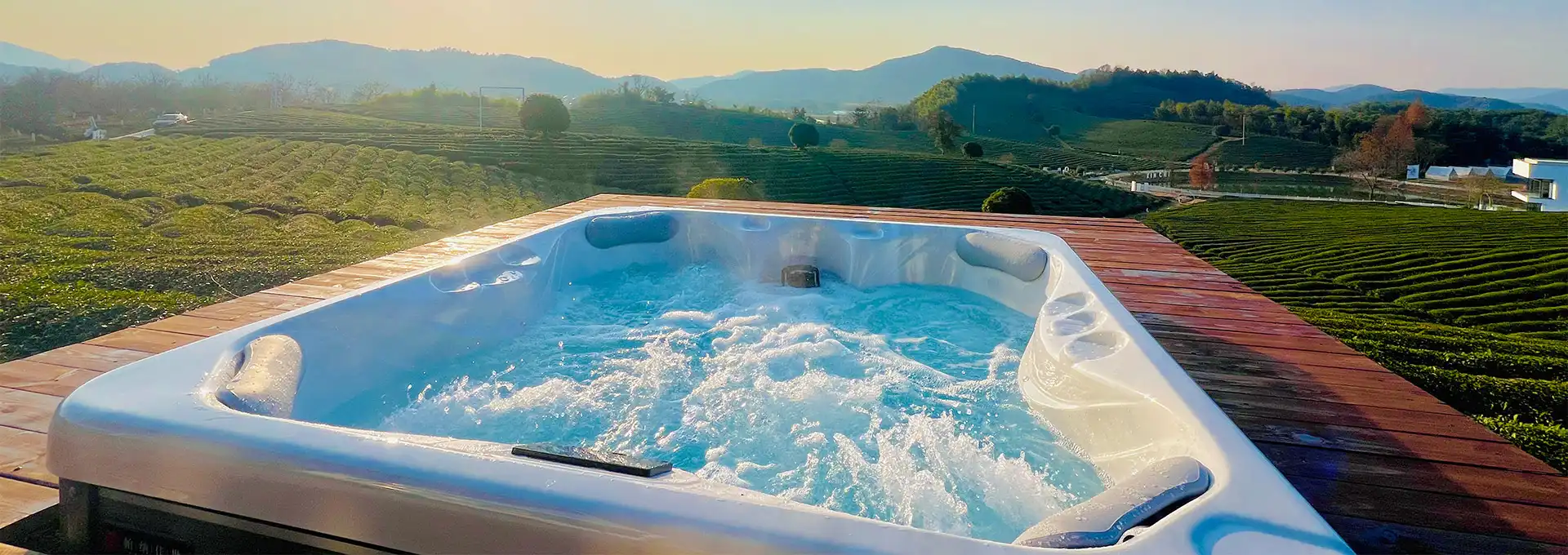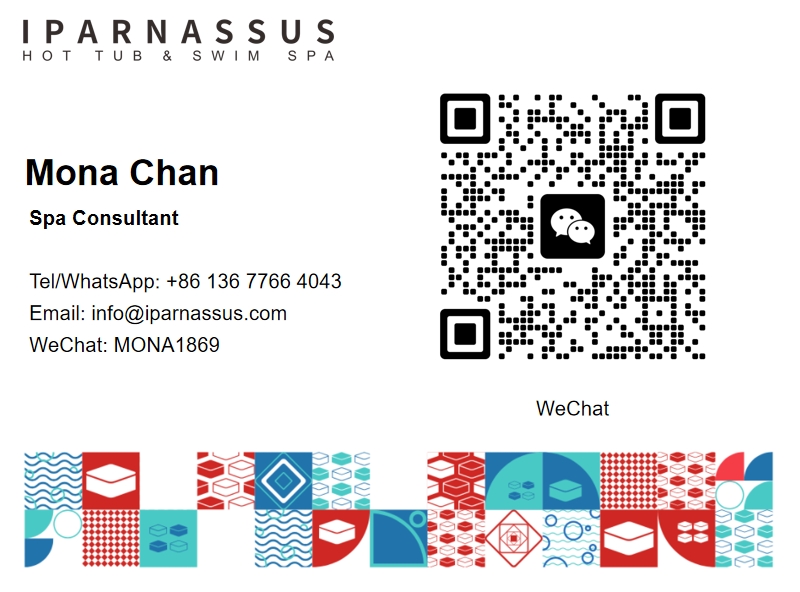Can a Plunge Cold Tub Reduce Post-Workout Inflammation?
2025-07-24 15:46:51
Post-workout inflammation has long been recognized as a natural response to intense physical activity, but the question of whether cold water immersion can effectively reduce this inflammatory response continues to drive research and athlete interest worldwide. A Plunge Cold Tub represents a controlled method of cold water immersion that allows individuals to experience the potential anti-inflammatory benefits of cryotherapy in a safe, regulated environment. The science surrounding inflammation reduction through cold exposure involves complex physiological mechanisms including vasoconstriction, reduced metabolic activity, and altered immune system responses. Understanding how a Plunge Cold Tub influences post-exercise inflammation requires examining the intricate relationship between temperature exposure, cellular responses, and recovery processes that occur following intense physical exertion.
How Does a Plunge Cold Tub Affect Inflammation Markers in the Body?
Vascular Response and Inflammatory Control
The primary mechanism by which a Plunge Cold Tub influences inflammation begins with the immediate vascular response to cold water exposure, creating a cascade of physiological changes that directly impact inflammatory processes. Cold water constricts blood vessels, this slows blood flow and relieves some of the swelling and soreness that commonly occurs following intense exercise sessions. When individuals immerse themselves in a Plunge Cold Tub, the rapid vasoconstriction reduces blood flow to peripheral tissues, effectively limiting the delivery of inflammatory mediators to areas of exercise-induced tissue damage. This controlled reduction in circulation helps minimize the accumulation of inflammatory proteins and reduces the overall inflammatory burden on recovering muscles. The vascular response also facilitates the removal of metabolic waste products that contribute to inflammation, creating an environment more conducive to efficient recovery and reduced inflammatory stress.
Cellular and Molecular Inflammatory Responses
At the cellular level, a Plunge Cold Tub triggers specific molecular pathways that can modulate the inflammatory response through multiple mechanisms involving cellular metabolism and stress protein activation. A recent study showed that cold plunges are effective in reducing inflammation and delayed onset muscle soreness (DOMS), demonstrating measurable changes in inflammatory biomarkers following cold water immersion. The cellular responses include alterations in heat shock protein expression, changes in cytokine production, and modifications in inflammatory cell recruitment patterns. Research indicates that the controlled stress imposed by a Plunge Cold Tub can activate cellular defense mechanisms that help regulate the inflammatory response without completely suppressing the beneficial aspects of exercise-induced inflammation. These molecular adaptations contribute to more efficient tissue repair processes and potentially faster return to baseline inflammatory levels compared to passive recovery methods.
Systemic Inflammatory Modulation
Beyond localized effects, a Plunge Cold Tub influences systemic inflammatory markers throughout the body, creating widespread anti-inflammatory effects that extend beyond the immediate exercise-affected tissues. This stimulates the parasympathetic branch of the nervous system which lowers your heart rate, blood pressure and is anti-inflammatory when individuals submerge their head during the cold water immersion. The systemic effects include modulation of circulating inflammatory cytokines, changes in stress hormone levels, and activation of anti-inflammatory pathways throughout the cardiovascular and nervous systems. This whole-body approach to inflammation management through a Plunge Cold Tub can provide benefits that extend beyond the specific muscles engaged during exercise, potentially supporting overall recovery and immune system function. The systemic inflammatory modulation also contributes to improved sleep quality, reduced perceived fatigue, and enhanced overall well-being in individuals who regularly incorporate cold water immersion into their recovery protocols.
What Temperature and Duration Are Most Effective for Reducing Inflammation with a Plunge Cold Tub?
Optimal Temperature Parameters for Anti-Inflammatory Effects
The effectiveness of a Plunge Cold Tub for inflammation reduction is heavily dependent on maintaining specific temperature ranges that maximize therapeutic benefits while ensuring user safety and comfort. Cold water constricts your blood vessels, which can help with the swelling related to inflammation, with optimal temperatures typically ranging between 50-60°F (10-15°C) for most therapeutic applications. Research suggests that temperatures at the lower end of this range produce more pronounced anti-inflammatory effects due to greater vasoconstriction and more significant physiological stress responses. However, the Plunge Cold Tub must be carefully calibrated to avoid temperatures that could cause tissue damage or excessive physiological stress that might actually increase inflammatory responses. Individual tolerance varies significantly, and beginners should start with temperatures closer to 60°F before progressing to colder exposures as their cold adaptation develops over time.
Duration Protocols for Maximum Inflammatory Reduction
The duration of exposure in a Plunge Cold Tub plays a crucial role in determining the magnitude of anti-inflammatory effects, with research identifying specific time windows that optimize therapeutic outcomes. There have been a couple of studies showing that there may be some decreased soreness after people were immersed in cold water for about 10 minutes versus shorter exposure periods. Most effective protocols involve exposure durations between 5-15 minutes, with the specific timing depending on individual tolerance, water temperature, and therapeutic goals. Shorter durations of 5-8 minutes may be sufficient for mild anti-inflammatory effects, while longer exposures approaching 10-15 minutes in a Plunge Cold Tub can provide more substantial inflammation reduction. However, excessively long exposures may lead to diminishing returns and potentially increase the risk of adverse effects, making precise timing control an essential component of effective inflammation management protocols.
Progressive Adaptation and Protocol Customization
Successful inflammation reduction through a Plunge Cold Tub requires a progressive approach that allows individuals to gradually adapt to more challenging temperature and duration combinations over time. But if you're new to cold plunges, Dr. King recommends starting much warmer, at about 68 F (20 C) before progressing to more therapeutic temperatures. The adaptation process involves gradually decreasing water temperature while potentially extending exposure duration as tolerance develops. This progressive approach ensures that users can maximize the anti-inflammatory benefits of their Plunge Cold Tub without experiencing excessive physiological stress that could potentially counteract the desired therapeutic effects. Individual factors such as body composition, previous cold exposure experience, and specific inflammation concerns should guide the customization of protocols to optimize outcomes while maintaining safety and adherence to the therapeutic regimen.
When Is the Best Time to Use a Plunge Cold Tub for Inflammation Management?
Post-Exercise Timing for Optimal Inflammatory Control
The timing of Plunge Cold Tub use in relation to exercise completion significantly influences its effectiveness for managing post-workout inflammation and optimizing recovery outcomes. Research indicates that icy water may have a positive effect on recovery after exercise by reducing inflammation and soreness when applied within specific time windows following physical activity. Most research suggests that cold water immersion is most effective when initiated within 30 minutes to 2 hours after exercise completion, while inflammatory processes are still developing and potentially more responsive to intervention. Using a Plunge Cold Tub immediately after intense exercise can help intercept the inflammatory cascade before it reaches peak intensity, potentially reducing the overall magnitude and duration of the inflammatory response. However, the optimal timing may vary depending on the type of exercise performed, individual recovery patterns, and specific therapeutic goals related to inflammation management.
Frequency and Scheduling Considerations
The frequency of Plunge Cold Tub use plays a critical role in maximizing anti-inflammatory benefits while avoiding potential negative effects on training adaptations and long-term performance development. You can do cold plunging every day. However, if you're doing it after training, daily plunges could compromise the potential for long-term performance improvements due to interference with natural adaptation processes. For inflammation management purposes, most individuals benefit from using a Plunge Cold Tub 2-3 times per week, particularly following more intense training sessions or when elevated inflammation levels are expected. This frequency allows for significant anti-inflammatory benefits while preserving the natural inflammatory responses necessary for training adaptations and tissue strengthening. The scheduling should also consider individual recovery patterns, competition schedules, and overall training periodization to ensure that cold water immersion supports rather than hinders long-term athletic development and performance goals.
Strategic Integration with Recovery Protocols
Effective inflammation management through a Plunge Cold Tub requires strategic integration with other recovery modalities and overall wellness practices to maximize therapeutic outcomes. There's a reason ice baths have been recommended for sore muscles for generations — according to a 2022 review, numerous studies have shown that cold water therapy can reduce swelling, lessen the perception of pain in the body, and speed muscle recovery. The integration approach should consider complementary therapies such as active recovery, nutrition strategies, sleep optimization, and stress management techniques that work synergistically with cold water immersion. A Plunge Cold Tub can be effectively combined with contrast therapy protocols, where alternating hot and cold exposures enhance circulation and potentially amplify anti-inflammatory effects. The strategic timing of cold water immersion should also account for other recovery activities, ensuring that the Plunge Cold Tub enhances rather than conflicts with sleep quality, meal timing, and other essential recovery processes that contribute to inflammation management and overall health optimization.
Conclusion
The evidence supporting the use of a Plunge Cold Tub for reducing post-workout inflammation demonstrates significant potential through multiple physiological mechanisms including vasoconstriction, cellular modulation, and systemic anti-inflammatory responses. Optimal protocols involving 50-60°F water temperatures for 5-15 minutes, applied within 2 hours post-exercise, can effectively reduce inflammatory markers and accelerate recovery when properly integrated into comprehensive wellness strategies.
Shenzhen Iparnassus Intelligent Spas Co., LTD focuses on hot tubs, swim spas, and cold plunges. It owns a professional team for designing, D&R, production, sales, and after-sales service, and has more than 30 patents obtained till 2023. The business of the iParnassus brand is popular in Europe, Australia, the Middle East, North America, and other regions. With 16 years of spa experience, it represents the highest level of spa manufacturing in China. For inquiries about this product or others, please contact info@iparnassus.com for dedicated service.
References
1. Machado, A. F., et al. (2016). Can water temperature and immersion time influence the effect of cold water immersion on muscle soreness? A systematic review and meta-analysis. Sports Medicine, 46(4), 503-514.
2. Peake, J. M., et al. (2017). The effects of cold water immersion and active recovery on inflammation and cell stress responses in human skeletal muscle after resistance exercise. Journal of Physiology, 595(3), 695-711.
3. Roberts, L. A., et al. (2015). Post-exercise cold water immersion attenuates acute anabolic signalling and long-term adaptations in muscle to strength training. Journal of Physiology, 593(18), 4285-4301.
4. Bleakley, C., et al. (2012). Cold-water immersion (cryotherapy) for preventing and treating muscle soreness after exercise. Cochrane Database of Systematic Reviews, 2, CD008262.
5. Allan, R., et al. (2019). Is the ice bath finally melting? Cold water immersion is no greater than active recovery upon local and systemic inflammatory cellular stress in humans. Journal of Physiology, 597(6), 1683-1704.
6. Versey, N. G., Halson, S. L., & Dawson, B. T. (2013). Water immersion recovery for athletes: effect on exercise performance and practical recommendations. Sports Medicine, 43(11), 1101-1130.



